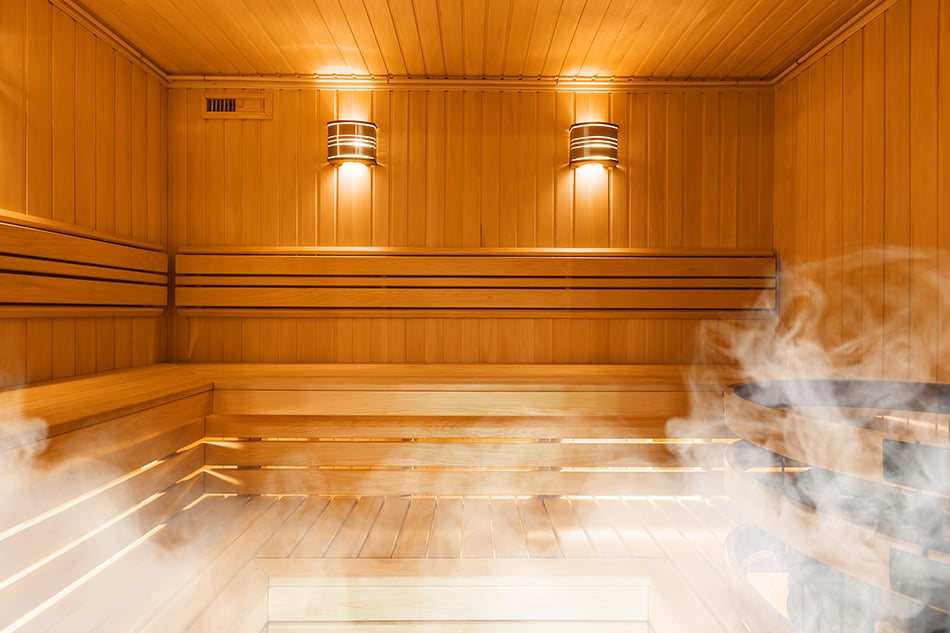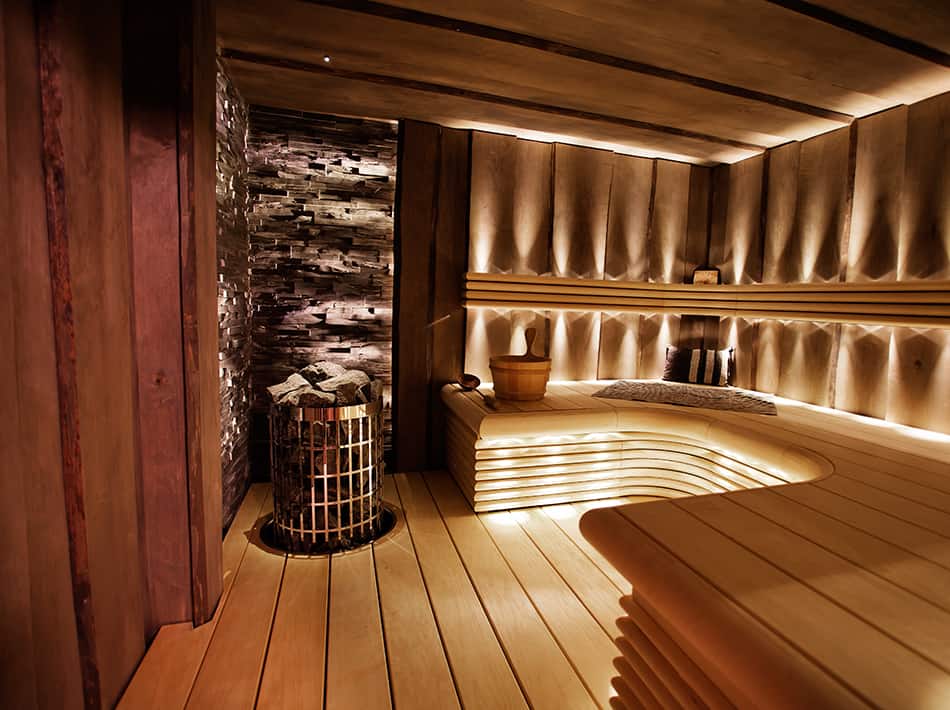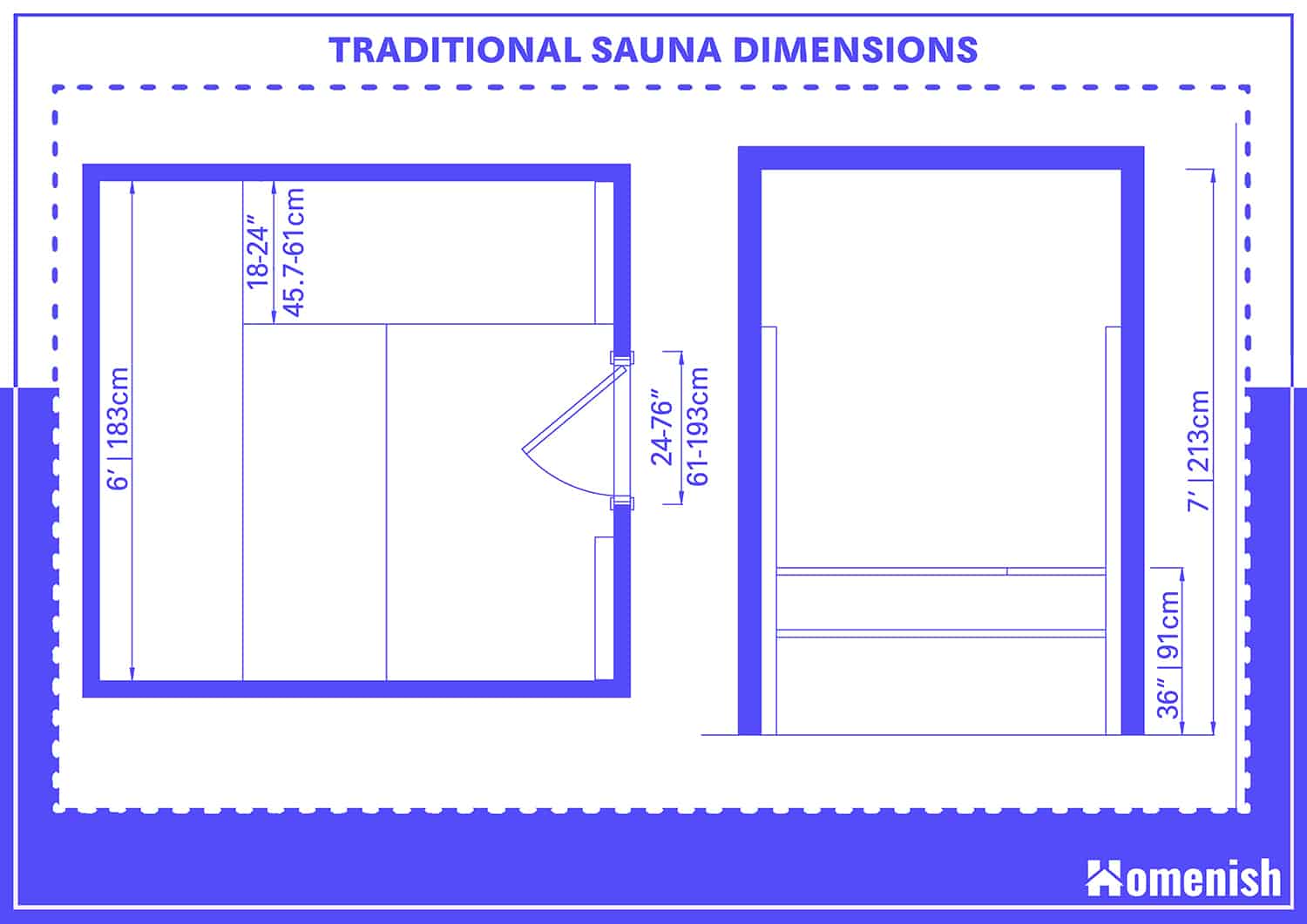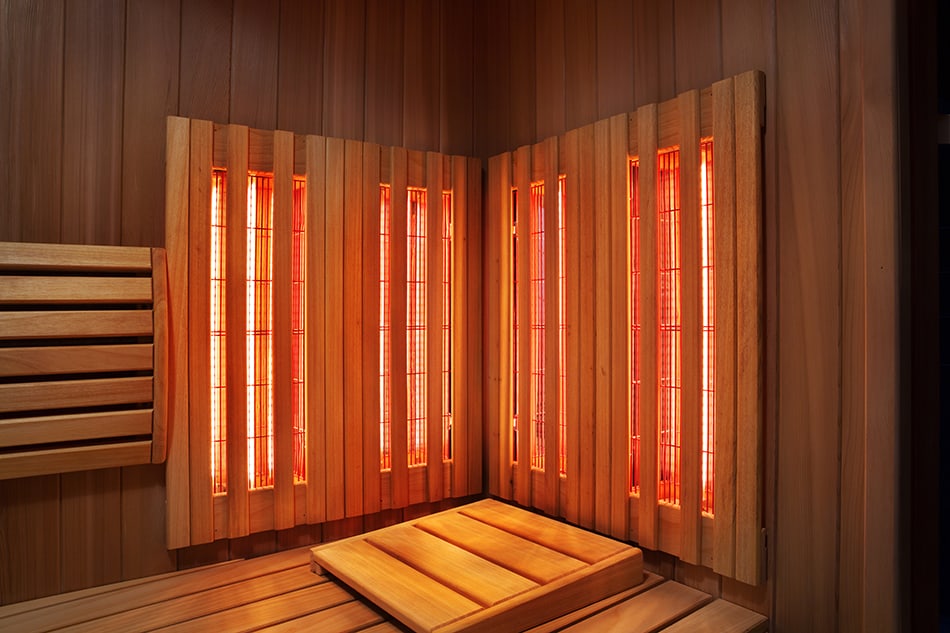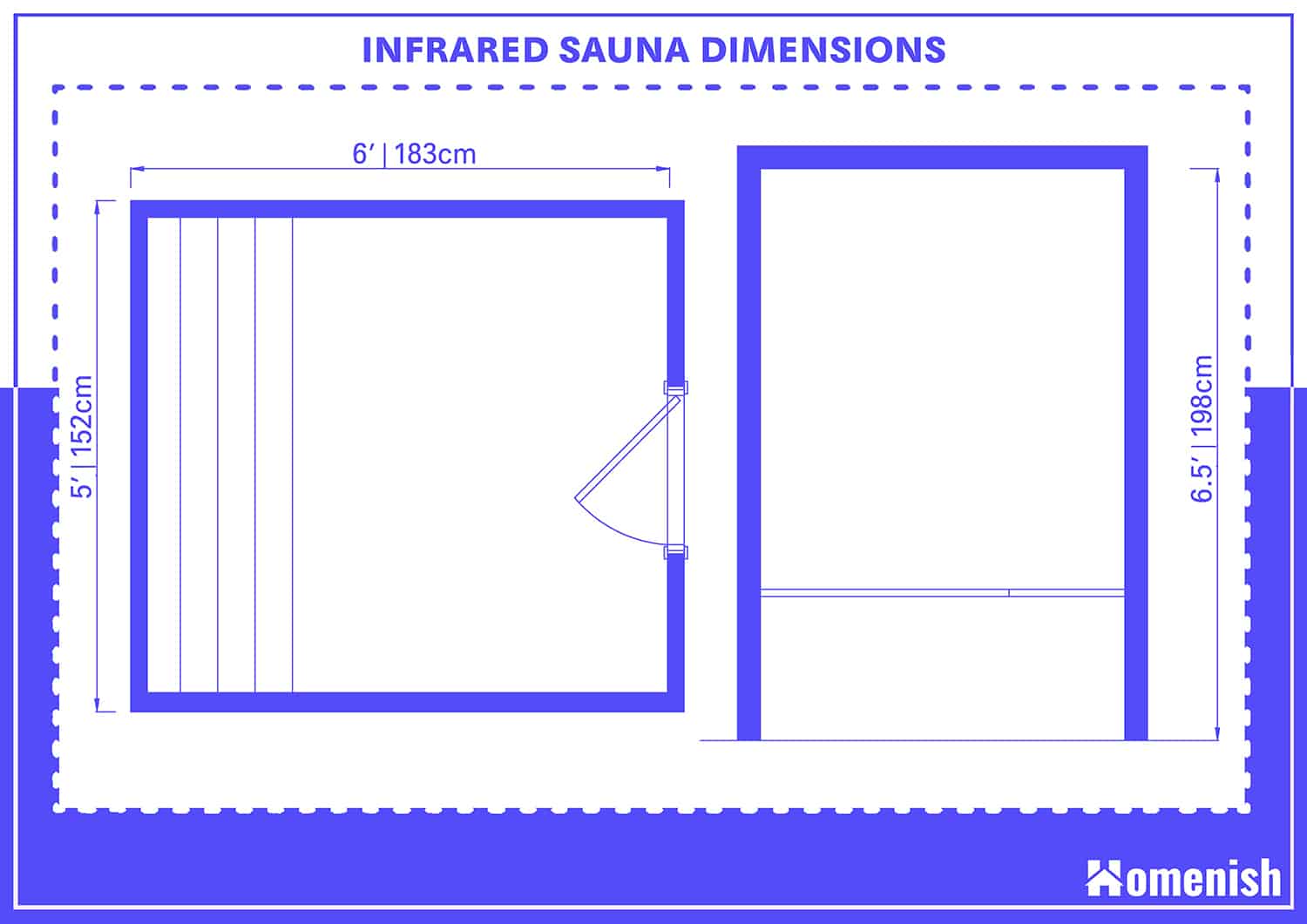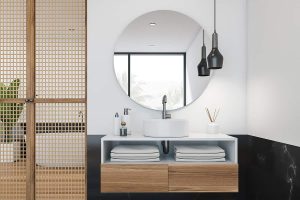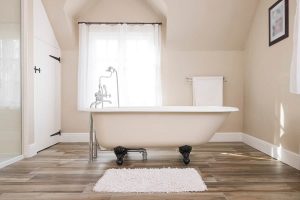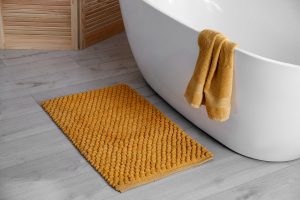Saunas have been used for thousands of years, and some of the oldest sauna structures discovered date back as far as 2000 years.
However, the practice and health benefits of using steam as natural therapy are undoubtedly older than that. Saunas are closely associated with Finland, where they’re found in all shapes and sizes in homes, offices, outdoors, and even in a fast-food restaurants! In the past 20 years, they’ve gained widespread popularity in the US, with DIY enthusiasts building private home saunas.
Here is a quick table that rounds up the sauna dimensions.
| Type of Sauna | Dimensions (ft) | Height (ft) | People |
|---|---|---|---|
| Traditional Small Home Saunas | 4 x 4 | <=7 | 2 |
| Big Traditional Saunas | 8 x 12 | <=7 | 12 |
| L-Shape Traditional Home Saunas | 6 x 6 | <=7 | 4 |
| 4-person Infrared Sauna | 5 x 6 | 6.5 | 4 |
Types of Saunas and Their Dimensions
The basic sauna is constructed with wood that can withstand heat without warping. Common types of timber used are aspen, cedar, and pine. A wood stove or hot stones generate heat. Newer sauna styles incorporate glass paneling and other modern architectural elements and are heated electronically.
There are two main types of saunas – traditional and infrared.
Traditional Saunas
Traditional saunas can be built indoors or outdoors and have a temperature range of between 185 to 190 degrees Fahrenheit. The sauna is heated with hot stones, which heat the air and raise your body’s temperature.
This type of sauna uses “wet heat”, where steam is generated by sprinkling water on the rocks to increase humidity. The more water added, the higher the moisture level, and vice versa. Proper ventilation is essential to maintain comfort levels.
How Much Space Do You Need for a Traditional Home Sauna?
You may be surprised to discover that you don’t need a lot of space for a home sauna. You can build it in an unused room or in the basement, or it can be as easy as converting a closet.
A home sauna can be as small as 4ft x 4ft, with enough space for one or two person to enjoy it. Of course, if space is not an issue or you have a big enough backyard for an outdoor build, you can go for an 8ft x 12ft sauna, which fits up to 12 people and is a relaxing and social space for bigger groups.
Given that a home sauna can be constructed in different spaces for any number of bathers, they are available in several configurations, from a standard square 1-seater box to U-shaped multi-seaters.
Let’s look at what it would take to build an average-sized sauna that can comfortably accommodate up to four bathers.
General Traditional Sauna Dimensions
A typical home sauna in a classic L-shape is 6ft x 6ft and includes an upper and lower bench, with enough room for the heater.
The height of the sauna should be no more than 7ft, which allows more than enough space for an adult to stand upright. A more than 7ft high sauna will become inefficient because the heating unit will have to work much harder to generate enough hot air to heat the space adequately.
Now, let’s talk about benches.
The ideal bench setup should allocate at least 2 feet of seating space for each person. Since a sauna is all about relaxation, it’s reasonable that bathers will want to lie down, so the benches should also extend at least 6 feet in one direction.
If you plan to have a two-tier bench arrangement, you should place the top-level bench 36 inches from the floor. You should allow between 40 to 44 inches from the top bench to the ceiling.
The lower bench serves multiple purposes. It’s a seat and a step to access the upper bench, plus a footrest for bathers sitting on the top bar. The lower bench should be 19 inches high, approximately the height of a chair, so that an adult of average size can sit comfortably with their feet flat on the floor. You’ll need a minimum of 47 inches of clearance between the heater and the bottom bench, so the person sitting closest to it doesn’t get too hot.
The benches should ideally be between 18-24 inches deep.
Once you’ve decided on your seating arrangement, you can turn your attention to your sauna’s ventilation. Proper air circulation is necessary to prevent the atmosphere from becoming too humid and uncomfortable for bathers. Ventilation is also essential for the sauna’s proper functioning. Position the vent inlet below the heater and the outlet on the opposite wall about 4 inches below the ceiling.
You’ll notice that the measurements for sauna door openings are smaller than the standard door openings in your house. Sauna doors are kept small to retain as much heat inside the sauna as possible.
You can install a sauna door made from wood, glass, or a combination of the two. Regardless of the material you choose, ensure that it has enough insulation. A sauna door measures approximately 24 x 76 inches. Plan for a door opening that’s roughly 2 inches wider than the door to allow a little air to flow in and out.
Infrared Saunas
Infrared saunas use “dry heat” – generated by electric heaters – which apply heat directly to the body and raises its core temperature, producing sweat.
With temperatures ranging from 125-130 degrees Fahrenheit, infrared saunas are not as hot as traditional saunas and produce no steam, so they are ideal if you prefer less humidity and heat. Infrared saunas don’t require ventilation and don’t need to be pre-heated before use. They are better suited for indoor use.
How Much Space Do You Need for an Infrared Sauna?
The dimensions of an infrared sauna are similar to those of a traditional sauna. However, since an infrared sauna uses heater panels, which take up less space than a wood stove or rock heater, you can get away with a slightly smaller structure.
The average 4-person infrared sauna measures approximately 5ft x 6ft x 6.5ft and needs about ten 300Watt panel heaters to heat it sufficiently. Because infrared saunas don’t become as hot as traditional saunas, it’s important to stick to these dimensions or smaller.
If you want a larger sauna size, you can find hybrid heating systems that incorporate an electric rock heater and infrared panel heater so you can have the best of both worlds.
